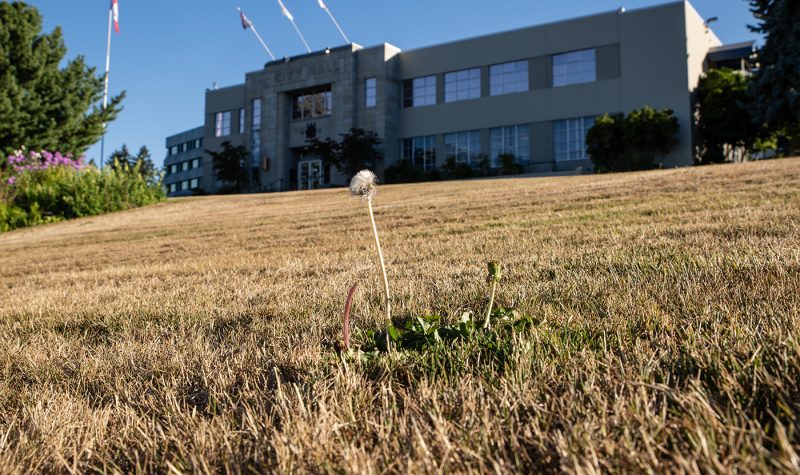East Vancouver Island is already experiencing severe drought conditions with the province listing it as Drought Level 5, which means that “adverse impacts to socio-economic or ecosystem values are almost certain.”
Minister of Emergency Management and Climate Readiness Bowinn Ma spoke at a press conference Tuesday about the drought in the province.
“I'm urging all people and businesses to conserve water,” she said. ”Follow all water restrictions locally.”
The minister even had some tips on how people can conserve water such as taking shorter showers, not watering your lawn, turning off the tap when brushing your teeth and only washing full loads of dishes or laundry.
“If you've boiled water as part of your food preparation, wait for it to cool down and water your plants with it instead of pouring it down the drain,” she said. “I hear that's actually very nutritious for plants as well.”
Jonathan Boyd, a hydrologist at BC’s River Forecast Centre, said the impact of the drought is already being felt on Vancouver Island.
“Streams that are less than three meters wide are dry,” he said. “Many wetlands are completely dry right now and aren't necessarily functioning as wetlands and we have had reports of some fish kills in the Cowichan River where fry salmon fry have not survived due to the high temperature.”
While already severe, Boyd says that unless there is significant rain soon the drought is expected to worsen.
"We don't actually typically reach the lowest flows on rivers and creeks until late August and into September. So that's when we will expect to see the most dramatic impacts.”
Boyd cautions that while some areas have better water reserves that’s not the case for every area in the region.
“Even though some jurisdictions aren't actually seeing challenges with their water supply right now, doesn't mean that it might not happen later in the summer or early fall,” he said.
“Groundwater well levels are a little difficult to see and really, truly understand what will happen in a couple of months compared to the predictability of lakes or rivers.”
According to Boyd, the biggest risk is if the snowpack in the mountains this winter can’t replenish the reservoirs in the spring.
“A worst-case scenario is that it extends into the winter and spring like it did last year,” he warned. “In some ways, we were a little bit lucky that we did have a healthy snowpack. But we haven't ever really experienced these droughts that last year to year, like California has recently, and that could be the longer term risk as we move into this changing climate and changing situation.”
The Regional District of Nanaimo is on Stage 4 watering restrictions, which bans outdoor sprinkler use, and prohibits the washing of vehicles, RVs, boats, driveways, sidewalks, parking lots and buildings. Residents are also not allowed to fill swimming pools and hot tubs.
The City of Nanaimo is currently at Stage 3 watering restrictions which asks residents to voluntarily reduce their water usage.
“These actions do make a difference when we all do them,” said Ma.
Listen to the CHLY story below:


